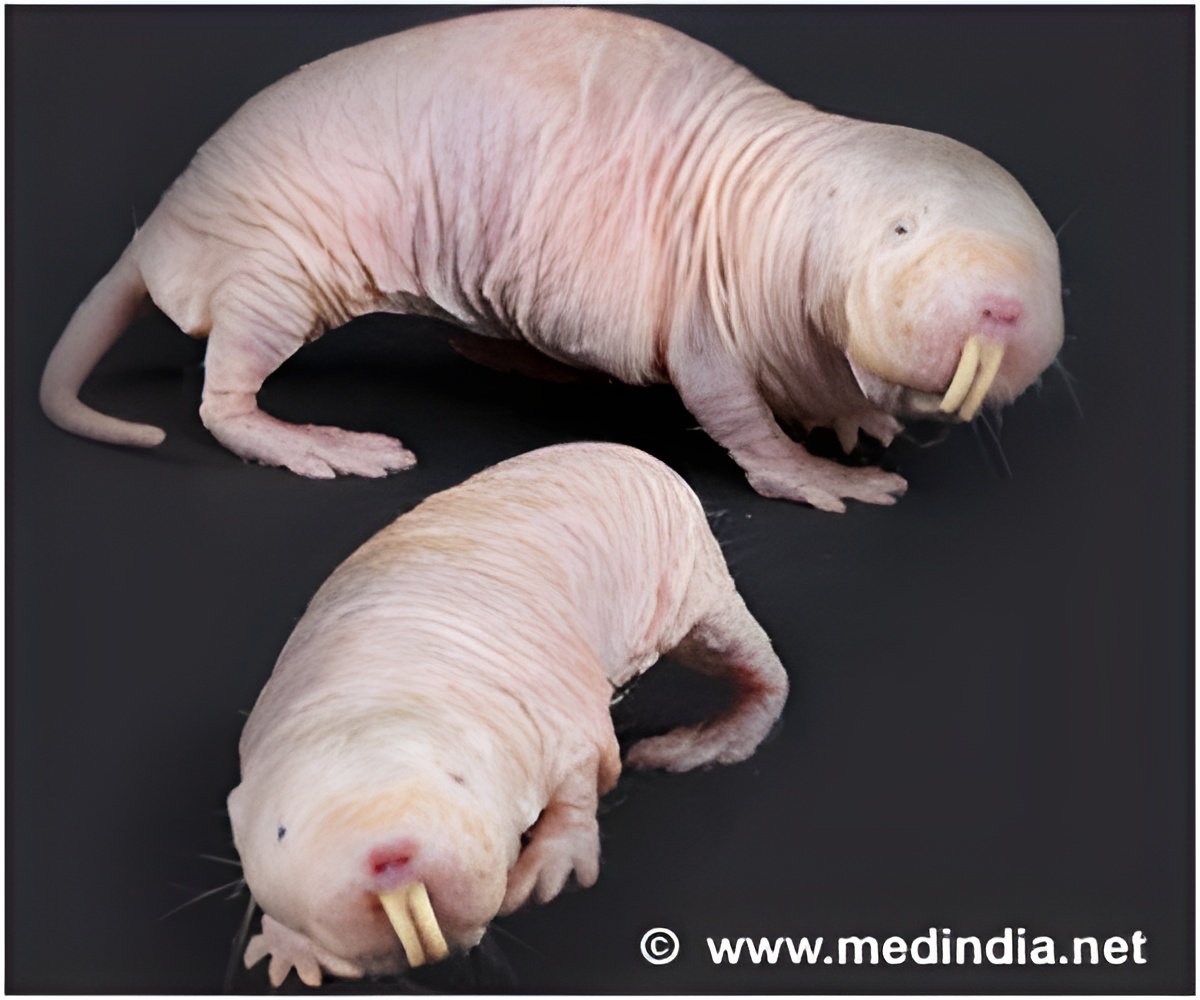An indication probably causes naked mole rats to live longer and healthy life, discovered by scientists.

From infancy to old age, naked mole rats are blessed with large amounts of a protein essential for normal brain function, according to the team from the United States and Israel.
"Naked mole rats have the highest level of a growth factor called NRG-1 in the cerebellum. Its levels are sustained throughout their life, from development through adulthood," said Yael Edrey, doctoral student at The University of Texas Health Science Center San Antonio's Barshop Institute for Longevity and Aging Studies.
Edrey is the lead author of research that compared lifelong NRG-1 levels across seven species of rodents, from mice and guinea pigs to blind mole rats and Damaraland mole rats.
NRG-1 levels were monitored in naked mole rats at different ages ranging from 1 day to 26 years. The other six rodent species have maximum life spans of three to 19 years.
The cerebellum coordinates movements and maintains bodily equilibrium. The research team hypothesized that long-lived species would maintain higher levels of NRG-1 in this region of the brain, with simultaneous healthy activity levels.
Advertisement
"In both mice and in humans, NRG-1 levels go down with age," Edrey said.
Advertisement
"The strong correlation between this protective brain factor and maximum life span highlights a new focus for aging research, further supporting earlier findings that it is not the amount of oxidative damage an organism encounters that determines species life span but rather that the protective mechanisms may be more important," said senior author Rochelle Buffenstein, Ph.D., professor of physiology and cellular and structural biology at the Barshop Institute. She is Edrey's research mentor.
The finding, while not directly applicable to humans, has many implications for NRG-1's role in maintaining neuron integrity.
The study has been described in an issue of Aging Cell.
Source-ANI









